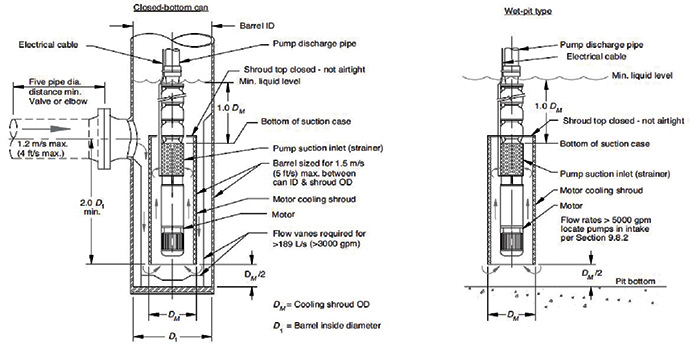03/02/2016
Q. What intake design considerations are important for submersible vertical turbine pumps? A. Submersible vertical turbine pumps can be installed in a wet pit or closed bottom can as shown in Figure G.1. Well motor types are recommended for both wet-pit type and closed-bottom can type of below-grade suction intakes in a rotodynamic pump.
 Figure G.1. Submersible vertical turbine pump (Courtesy of Hydraulic Institute)
Figure G.1. Submersible vertical turbine pump (Courtesy of Hydraulic Institute)- the orientation of the structure relative to the body of supply liquid
- whether the structure is recessed from, flush with or protrudes beyond the boundaries of the body of supply liquid
- strength of currents in the body of supply liquid perpendicular to the direction of approach to the pumps
- the number of pumps required and their anticipated operating combinations
See other HI Pump FAQs articles here.

